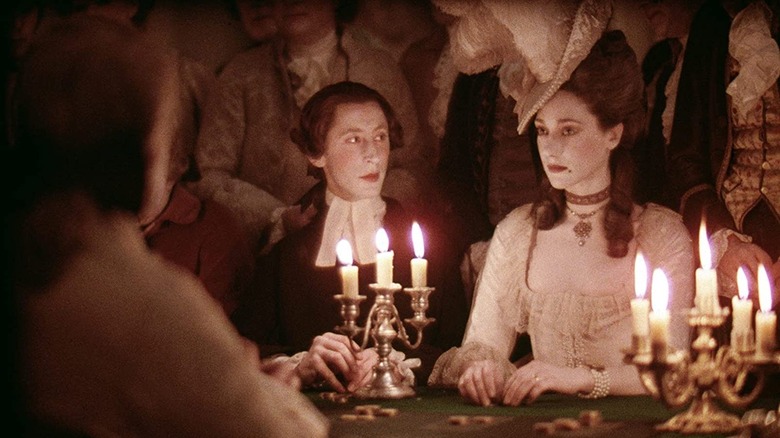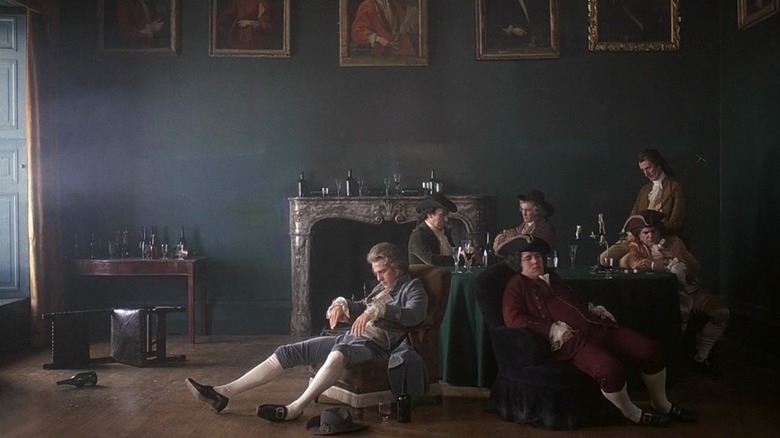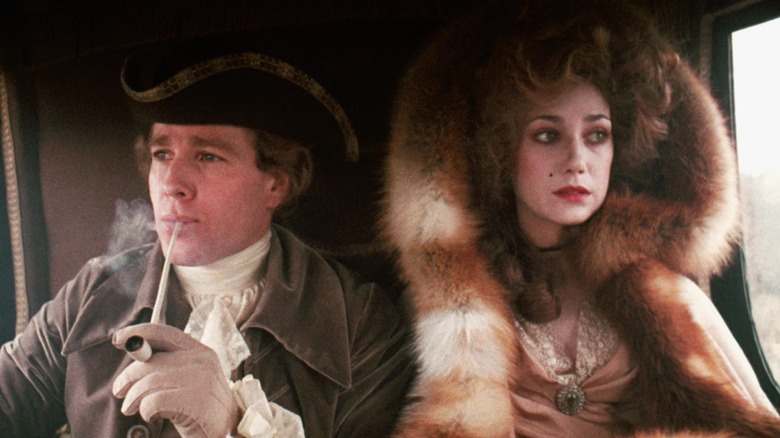Stanley Kubrick Was Intensely Committed To Getting Barry Lyndon's Costumes Right
Stanley Kubrick was, to put it mildly, an exacting filmmaker. He made it his business to know everything about every aspect of production, and leaned on his collaborators something fierce to deliver to his meticulous standards. Jack Nicholson put it best when he said, "Stanley's good on sound. Stanley's good on the color of the mike. Stanley's good about the merchant he bought the mike from. Stanley's good about the merchant's daughter who needs some dental work. Stanley's good."
While prepping his adaptation of William Makepeace Thackeray's picaresque "The Luck of Barry Lyndon," Kubrick immersed himself in the tale's 18th century period. It wasn't enough to evoke the look of the era; the filmmaker was determined to capture the precise look and feel and smell of that bygone age. To do so, he famously went so far as to acquire super-fast Zeiss camera lenses that were used during the Apollo moon landing (which may have resulted in a game of conspiracy theory telephone that led people to speculate that Kubrick shot the allegedly fake moon landing in a British studio). Every detail had to be spot on, especially the costumes. This led the director down a sartorial rabbit hole that must've driven designers Milena Canonero and Ulla-Britt Söderlund to the brink of insanity.
Resurrecting the past
In a 1975 interview with Michael Ciment, later published in the book "Kubrick," the filmmaker explained the method to his maddening process. "I suppose you could say it is a bit like being a detective," he said. "On 'Barry Lyndon,' I accumulated a very large picture file of drawings and paintings taken from art books. These pictures served as the reference for everything we needed to make — clothes, furniture, hand props, architecture, vehicles, etc."
When it came to the threads, Kubrick wasn't satisfied with simply working from the drawings and paintings of the period. The manufacture of these costumes had to be carried out in a manner faithful to their era. Dig this:
"What is very important is to get some actual clothes of the period to learn how they were originally made. To get them to look right, you really have to make them the same way. Consider also the problem of taste in designing clothes, even for today. Only a handful of designers seem to have a sense of what is striking and beautiful. How can a designer, however brilliant, have a feeling for the clothes of another period which is equal to that of the people and the designers of the period itself, as recorded in their pictures?"
An inimitable masterpiece
"Barry Lyndon" may very well be Kubrick's finest work. It's a series of paintings come to life. He never had more control of every variable that goes into a film's production. There are those who look at the candlelit sequences and say Kubrick would've been an early, eager adopter to digital cinema, but I doubt this very much because texture was just as important to him as image stabilization. Steven Soderbergh's "The Knick" is the only recent work I've seen that approaches the aesthetic period authenticity, from locations to clothing, that Kubrick sought throughout his career.
"Barry Lyndon" is special. It is a cold film that leaves you feeling fairly awful about humanity, but for three hours you are awash in a world as strange and distant as the galactic expanse of "2001: A Space Odyssey." Insisting that clothes be sewn precisely as they were in the 1700s matters for something. It matters a lot.


